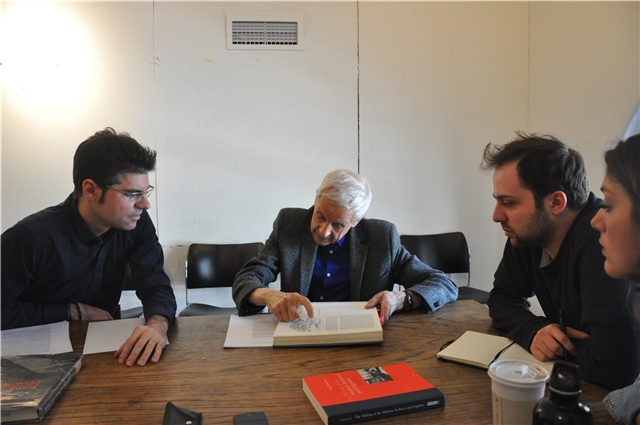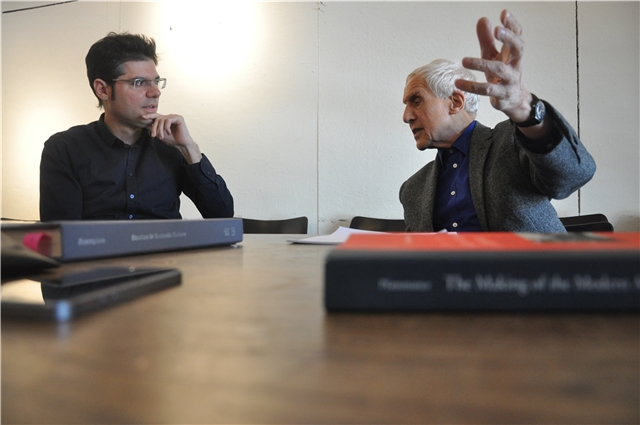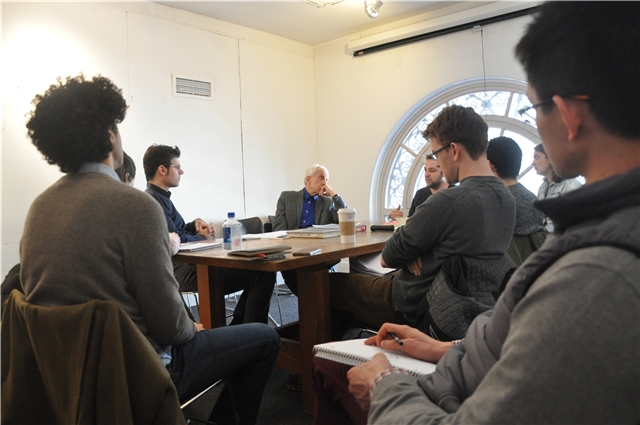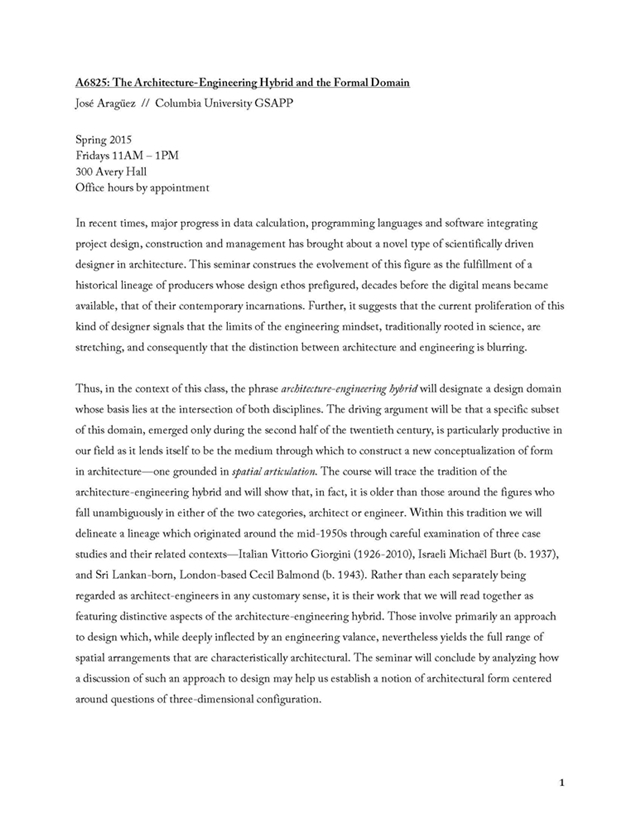- 1. Since the question of industry seems to be the most recurrent trope in Pfammatter text, I figured it’d be a good idea to start off by asking what does it mean, this term industry, really? How are we to understand it in the context of 19th century France? (social progress, general welfare, saint-simonian positivism, …)
2. Pfammatter’s focus on analyzing schools seems to suggest that, just like Picon argued about the 18th century, he believed that new professional models in the 19th century were spread mainly through teaching. What’s your take on that?
3. It seems like the landscape of technical training in the France of the 19th century is centered around the Polytechnic, the Ecole Centrale, and the Ecole des Ponts et Chausees. What are the basic differences between the three?
4. Further specifying the difference between Polytechnic and Centrale (also called “Industrial Polytechnic”)—the Ecole Centrale, founded right when Durand was at the end of his tenure at the Polytechnic, was based on the same principles as the polytechnic, that is, combination of theory and practice, scientific principles of engineering formulated in a standardized curriculum for all students, and the continuation of the methods of Gaspard Monge. Polytechnic was more elitist (admission regulated according to the government’s need of military and civil engineers) and became more theoretical. The Centrale expanded the pedagogical ambitions of the Polytechnic by implementing education at the level of the emerging industrial sciences during the second half of the academic program (basic course vs. vocational course) and emphasizing the applied science part: correlation between pure basic theory and practical exercises or application courses (projects)—the school as a experimental ground to drive practice forward. Was this also in itself a novelty?
5. Chicken/egg issue around the increasing demand of specialization in practice, a dynamic already present toward the end of the 18th Century… —the emergence of new programs (railway engineering, mechanical industry, hospital construction, heated and technically equipped urban housing) and scales (factories for complex industrial processes, building programs of incredible magnitude) along with a new need for rationalization and speed caused architects and engineers to organize their activities more professionally? OR was it the other way around, that developments in the sciences and advances in education allowed for the emergence of those new programs and scales?
6. Ecole Centrale, first educational institution for architectural engineering worldwide. True (some argue it was the ENPC, founded in 1747)? What is this architectural engineering, which is a term we don’t use today? Combination of branches of engineering relevant to the construction of architectural structures, mainly structural engineering?
7. Durand vs. Charles-Louis Mary: speculative nature of design, buildings conceived in a vacuum, as a laboratory experiment vs. site visits to analyze the unfinished product, working process, assembly procedures, etc; structure and construction vs. composition; structure and material properties as generator of building vs. the plan as generator; language borrowed from history vs. attention to context and tradition (is this really true?); building types vs. problem patterns; design process as inductive, from part to whole vs. inclusive, solution-finding process involving variables of many different kind. Durand had moved away from the issues concerning construction so important during the 18th C. Can Mary’s inclinations be seen as regressive in this sense? Or is he to be seen as synthesizing 18th-century concerns with construction with Durand’s predilection for spatial typology?
8. Pfammatter says that Mary’s “utility” meant that the structural requirements followed the building’s function and spatial program, structure and function being the basis for composition and form. In what way were his teachings to be seen as an anticipation of modernism? How was his type of “functional building” different from the functionalism of the modern movement?
9. Mary’s developed a so-called integral approach whereby graduates, specifically those in construction, were to be able to combine engineering, material-technological and economic skills, with those of an artist. But it seems like what really took primacy was the formation of an engineering mindset, where structural theory and structural types were seen as links between architecture and engineering; universal applicability of design methods; emphasis on procedural thinking. Doesn’t it sound a lot like some of the architecture schools in Europe which include technical training, except that there the emphasis was on engineering rather than architectural design?
10. In the literature on architecture and art history in most cases only the architects of such works are mentioned, less the engineers. Hence the historical importance of the Ecole Centrale was overlooked. Is this true? Does this have anything to do with the fact that there is no such thing as engineering studies?
11. On the one hand, Pfammatter wants to see the Ecole Centrale as the training ground for the “architect engineer.” He insists that its goal was to provide basic training for generations of architects and engineers; that its graduates were to combine engineering with artistic skills; that it tried to compete with the EdBA in terms of drawing and renderings (until the last third of the 19th C., when the final split occurs between B-A-inspired arch. Teaching and civil engineering); he says that the division between composition/decoration and construction/structure that begins in the 19th century did not hold in Mary’s teachings, which supposedly held the two areas together. But there was no training in design proper, or design competitions, in contrast to the EDPC in the previous century, and in practice, what we have in the 19th century is always a collaboration between an architect and an engineer (Giedion about a 1813 granary in Paris: “It is to our knowledge the first time that architect and engineer were no longer incorporated in the same person”). “Hybrid” is therefore a quality of the work, not the figure. Agree?
12. Do you agree with Giedion that during the course of the 19th century “the engineer increasingly encroached upon the field of the architect,” rather than grew his own domain of action?
13. Referring to the unity of architecture as part of the fine arts, on which the Beaux-Arts was founded, he claims that “in the Baroque this unity had been complete and self-evident. But in the course of the nineteenth century it became conflicting and false. Even today the academy des Beaux-Arts proves itself to be a most distressing drag on active development.” Why is he saying that, and where is his criticism coming from?
14. When discussing the training of the architect, Giedion mentions the opposition between the Polytechnic and the Beaux-Arts, that is, between rationalism (which he will root for) and academicism. No mention is made of the Ecole Centrale. Does this support the idea that the latter was not about architects at all, despite Pfammatter, but rather about engineers?
15. Giedion argues that Labrouste, who Pfammatter considers a “Beaux-Arts engineer” is able to grasp the inner organism of each construction, in contrast to the Beaux-Arts architects. What does he mean by “inner organism”?
16. German engineers applied aesthetic principles normally reserved for architectural ornament to the forms of constructions themselves, and in so doing they proved that they were able to engage in the sort of thoughtful speculation associated with cultivated, university learning. This idea of the forms of construction possessing aesthetic worth, and of discussing the abstract principles underlying the beauty of engineering design…has it not been associated only to recent views, such as those of David Billington?
17. Romba says that “engineers were more conventionally philosophical than architects about the principles behind engineering form;” Picon had argued that architects were reluctant to raise to the level of abstract principles of thinking and science. Is this a pattern in architecture? Because it certainly applies to the 20th century as well…
18. The Humboldtian ideal of a university education preceding specialized instruction ran counter to the pragmatic need for engineering training to keep pace with Germany’s rapid industrialization. More specialization, less of a broad training. This drive for German engineers to develop a body of abstract theory—mainly aesthetics and philosophy of technology, but also metaphysics, empathy theory, classical literature and languages; not only by publishing texts, but more informally, by means of name- and concept-dropping in conversation—was determined by their wanting to achieve the same social status and prestige as the university-educated class (i.e. formal training in the humanities => humanities were therefore introduced, for example, in the training of engineers at TU Berlin) This was specific of Germany; it wasn’t the case in France, right?








